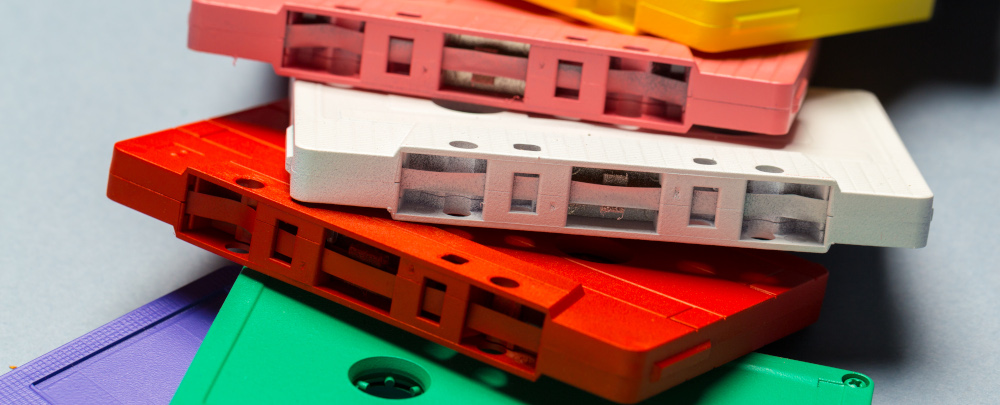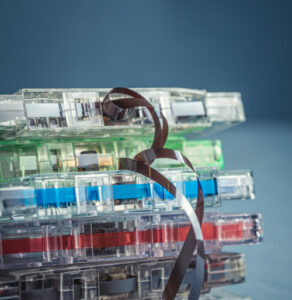
The Vanishing Art of the Mixtape in South Africa
There was a time when love came on a TDK cassette, wrapped in masking tape and scribbled promises. It didn’t arrive in your inbox or stream through curated algorithms. It clicked into your Walkman with a satisfying clunk, hissed for a second, then gave you someone’s heart, track by track, beat by beat.
South Africa had its own rhythm to the mixtape. In townships and suburbs, from Cape Flats to Katlehong, the art of crafting a compilation was serious business. You weren’t just recording songs. You were telling someone who you were. That you liked TKZee, but you also had a soft spot for The Manhattans. That you could move to Brenda Fassie but still drift away with Johnny Clegg on Side B. There were rules, you didn’t start with your favorite song, you built up to it. You didn’t interrupt the mood with ads from the radio if you could help it. And you always ended with something that lingered. Something that said, “Play me again.”
Mixtapes began to disappear before we even realised we needed to mourn them. First, the tapes turned to CDs. Then the CDs turned to burned MP3 discs. Then to flash drives. Then to playlists. And now? Now there’s a sense that even playlists don’t mean what they used to. They’re shared, yes, but shared passively. You don’t give someone a playlist the way you handed them a cassette. You don’t watch their face while they listen. You just hit “share” and hope they press play somewhere between their meetings and their errands. We lost more than plastic and ribbon. We lost a little ritual. We lost a language.
Back then, you could tell how someone was doing by the songs they picked. If a guy opened with Ringo Madlingozi and closed with Boyz II Men, you knew his heart was in pieces. If your cousin’s mix had three kwaito anthems and ended with a gospel banger, you knew there’d been drama, probably with his mom. These were emotional diaries disguised as dance tracks. You read people through the music they chose. You learned their silences by what they left out.
In rural towns and taxi ranks, mixtapes weren’t just for romance. They were for protest. For grief. For flexing. You’d get a tape titled Ekse Volume 3, and it would start with Tupac, slide into ProKid, and punch out with something deep from Bongo Maffin. That was history, identity, rebellion, all packed into 90 minutes. In a place where voices were often drowned out, music was one of the few things that traveled without asking permission.
 These tapes were handed around like currency. One guy in the neighborhood had the deck, the good radio, the steady hand. You paid him in chips or airtime or favors, and he gave you your story in stereo. People lined up. Women asked for birthday mixes. Uncles wanted wedding sets. Kids begged for bootlegs of 5FM countdowns. And somewhere in the middle of all of it was a quiet genius with a pause button and patience. But that genius doesn’t have much to do anymore. The pause button isn’t even on the screen now. Everything loops. Everything shuffles. And there’s no story in shuffle.
These tapes were handed around like currency. One guy in the neighborhood had the deck, the good radio, the steady hand. You paid him in chips or airtime or favors, and he gave you your story in stereo. People lined up. Women asked for birthday mixes. Uncles wanted wedding sets. Kids begged for bootlegs of 5FM countdowns. And somewhere in the middle of all of it was a quiet genius with a pause button and patience. But that genius doesn’t have much to do anymore. The pause button isn’t even on the screen now. Everything loops. Everything shuffles. And there’s no story in shuffle.
When the mixtape disappeared, something got flatter. Not just in music, in emotion. It’s hard to feel deeply about a song you didn’t choose. And it’s harder still to show someone who you are when the music is made by an algorithm trying to upsell you premium. We’ve gained access, yes, to everything, all the time. But we’ve lost curation. We’ve lost that handmade intimacy that said, “I stayed up all night to get the order right.”
There’s nostalgia in this, sure. But it’s more than that. It’s about remembering that music used to be an active gift, not a background blur. That sharing songs used to be personal, not performative. That a tape in someone’s hand meant more than 100 likes on your Spotify blend. South Africa still pulses with music. From amapiano to gqom, from dusty street speakers to backyard studios, the beat has not gone quiet. But the tape? The tape is gone. And with it, a specific kind of care. A specific kind of listening. Maybe that’s what this is really about, not music, but attention.
To make a mixtape, you had to listen. Not skip. Not scroll. You sat with the songs. You listened to the fade-outs. You worried about the transition from track four to five. You rehearsed the pause button like a nervous confession. And then, when you gave it away, you waited. You waited to see if they liked it.
No “seen” message. No instant reply. Just a hope that your voice, hidden in other people’s voices, was heard.
Maybe one day we’ll come back to that. Maybe we’ll make time again for music that speaks rather than shouts. For giving someone not everything, but just enough to know us.
Until then, there’s probably a shoebox somewhere in your mother’s house. A collection of cracked tapes, half-melted by the sun, labeled in faded pen. Don’t throw them out. Those aren’t just songs. They’re memories in motion. They’re the sound of someone once caring enough to press record.



